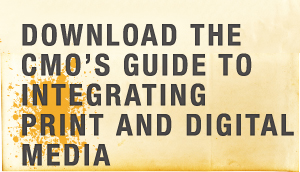Being media buyers, we read all sorts of print ads every single day. Some are pretty good, but if we’re going to be honest, the majority are weak. Many of our clients have come to us with dismal campaign ROI, not recognizing that their ads were the culprits. They believe they have followed the “right” ad rules. We’re not sure where they got their rules from. All we know is we gently try and convince them to never follow those rules again, then give them the REAL rules of writing effective print ads.
 RULE #1: Use a Powerful Headline
RULE #1: Use a Powerful Headline
Your headline is like the front door of a house: without one, nobody can enter and see the rest of the building. Without a powerful headline, your ad offers no reason for the reader to continue reading, let alone take any action.
Everyone knows their ad needs a headline, but the confusion lies in what information it should contain. It should contain any information that will peak a reader’s curiosity. Generally speaking, ads with big benefits to the reader are the most effective.
It’s worth mentioning at this point what’s NOT effective. What’s not effective are headlines that are abstract in some way, or worse, simply list company information.
An abstract headline:
“The Solution’s at Your Fingertips!”
This tells the reader nothing and will most likely not hold their attention.
An informational headline:
“Joe Smith’s Lawn Service”
What about his lawn service? Why should I care? What can his lawn service do for me?
Better headline examples would be:
“Never Deal with Weeds Again”
“You’ll Save $300 a Year in Heating Costs with This $10 Widget”
I hate weeds and I love saving money, so I’m definitely reading more.
RULE #2: Don’t Get Fancy
Take a look at the main editorial section of any newspaper and what do you see? Nothing fancy, that’s for sure. There’s a reason behind their choice in paragraph structure, line-spacing, font and font-size: namely, ‘serified’ fonts are the easiest to read, it’s easy to read black print on a white background, left paragraph alignment is easy to read, and the easiest body copy is between 9-point and 13-point.
While it’s okay to get a little creative with headline size, use of images and a bit of color to draw the eye, vary from what has been proven to work at your own peril. Why make reading your ad harder than it needs to be?
RULE #3: Your Ad Must Have a Unique Selling Proposition (USP)
Good ads make clear propositions; great ads make unique ones.
Some of the strongest headlines we’ve ever read have used a clear USP in place of a catchy slogan. You’d be surprised how this one “little” change can affect your campaign’s ROI.
Think about Domino’s Pizza. When they entered the marketplace they were just another pizza joint. They didn’t offer any kind of special pizza sauce or toppings, but what they DID offer was quite unique: delivery of the product in 30 minutes or less or you didn’t have to pay for it. This got people’s attention.
Which headline grabs your attention:
“Over 100s of Sofa’s to Choose From!” There’s nothing unique about offering a bunch of furniture.
“We’ll Remove Your Old Sofa for FREE!” This service is unique and wanted by the consumer.
RULE #4: Get to the Point Fast
Those advertisers who are parents have an advantage, as they know what it’s like to try and get a point across to someone with the attention span of dust. You don’t sit your 14-year-old down and go on and on about why they need to start paying more attention in school and trying harder. Do this and they’ll tune you out within the first five seconds. Sit them down and say, “No video games or TV until that C comes up to a B…” and now you’ve got their attention.
We see too many ads that waste the first couple of lines (precious print real estate) on “clever copy” before they deliver any kind of product or service offer, let alone benefits.
Do not try and be clever or imaginative, your reader will tune you out. Just get to the point and tell them how you can help them solve their problem.
RULE #5: Get Over Yourself
Your ad has to be all about the reader, not about how great you are, how long you’ve been in business, how many awards you’ve received, and on and on. These ads are self-serving and turn readers off. Your ad must be written with the reader’s interest in mind.
Make sure your ads do not use language that focuses on “us” the company or “it” the product or services, but instead focuses on “you” the reader.
Would you want to go to a doctor that went on and on about their own aches and pains, or one who focused on how she could help YOUR aches and pains?
Get over yourself and focus on your audience’s problems.
RULE #6: Tell The Reader What to Do
The most heartbreaking ads are the ones we see that are strong all the way through until the very end, when they just fizzle out.
Think of your ads like a movie: They’ve got to have a strong beginning (headline), middle (body copy) and end (call to action). If movies start out great and then fall flat in act 3, no one will give that movie a good review and others won’t bother seeing it.
Make sure you end your ad strong by telling the reader exactly what you want them to do next:
“Bring this coupon in to any of our locations for 30% off your next oil change.”
“Answer our online survey for a chance to win a free dinner for two.”
If you follow these 6 rules, your print ads will be much more effective and your ROI will have no choice but to increase.
We also encourage you to continually test the various components of your ad. For instance, after reading this post you may realize your headline is weak. Your next headline may cause a 6% increase in sales. While that’s good and something to be happy about, why not keep testing and tweaking to see if you can get that number up to 10% or 15%?
Related Posts
4 Effective Ways to Marry Your Print and Digital Ads
Hate Wasting Money on Print Advertising? Avoid These 8 Mistakes





